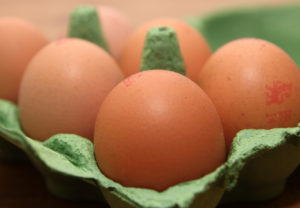27/10/2017
On 1st October the newest changes to the European Union Trade Mark Regulation came into effect, and one of the most significant updates is the introduction of EU Certification Marks.
Unlike a trade mark, which guarantees the origin of the goods or services to which it is applied, certification marks are used to guarantee specific characteristics of products and services. The use of them on a commercial product or in relation to a service certifies compliance with an accepted standard and is controlled by a regulatory authority (the owner of the certification mark). EU certification marks have been introduced to resolve an imbalance caused by the prevalence of certification marks at a national level in various member states.
Any person or business can apply to register an EU certification mark. It must be stated that the application is for a certification mark, and during the application process, the applicant must inform EUIPO of the regulations governing the certification. In particular, details are required as to the characteristics to be certified by the mark and the means by which the certifying body will test those characteristics and supervise the use of the mark.
Why are these important? From our research, we were surprised at the diverse certification marks used at national level around Europe and the obligations to use these country-specific marks. There is not always an EU-harmonised mark.
Certification marks have existed for some time at a national level and are highly valued in certain industries. The average supermarket shopper, for example, may recognise the British Lion egg-mark which certifies that each marked egg has been produced under the stringent British Lion code of practice. It has become so successful that over 90% of the eggs from the UK are produced under the British Lion scheme. Likewise, the Blauer Engle in Germany is awarded to goods in all manner of categories that pass environmental impact tests, and the KOMO is used to assure the high quality of building products and processes in the Netherlands.
 British Lion egg-mark
British Lion egg-mark
Certain marks are already in use across the whole of the EU. The CE mark, for instance, is a mandatory requirement for those categories of products that are subject to specific EU Directives: toys, medical devices, protective systems for use in potentially explosive atmospheres, to name a few. However, in many industries consumers have proven to be less concerned with CE marking and pay more attention to national marks instead. The CE mark is sometimes criticised as representing only a minimum conformity to the standard set by a particular EU Directive. This criticism, whether correct or not, presents national marks as the more recognisable to the target public, and therefore the more reliable indication of higher quality and safety.
These national certification marks do not technically clash with the CE mark, but they have such a strong effect in their respective markets that they essentially become barriers to trade. In certain industries consumers will often only buy certified products. In fact, the use of products that carry national certification marks is often a compulsory requirement imposed by insurance companies or by public procurement policy.
These localised certification marks have developed independently in so many territories that a list of those needed to operate in one industry across the single market is exhaustive. A manufacturer of insulating glass, for example, requires the following certifications in order to trade across the EU:
- Belgium Benor, ATG
- Finland SFS
- France Cekal
- Germany GMI (RAL), U-mark
- Italy CSI (UNI)
- Norway Sinteff
- Poland B-Safety
- Portugal CERTIF
- Spain N-mark, AP+
- Sweden Pmark
- UK Kite-Mark, BM-Trada
Up until now companies have been obliged to spend additional resources and time before they can put their products on national markets where these marks exist. SMEs can be especially disadvantaged. The hope is that by securing a new EU certification mark, the local symbols could be replaced and the customers educated to recognise the EU-level certification.
In the first few weeks, 33 EU certification marks have been filed. It will be interesting to see if regulatory bodies take advantage of this new alternative.
This article is for general information only. Its content is not a statement of the law on any subject and does not constitute advice. Please contact Reddie & Grose LLP for advice before taking any action in reliance on it.


